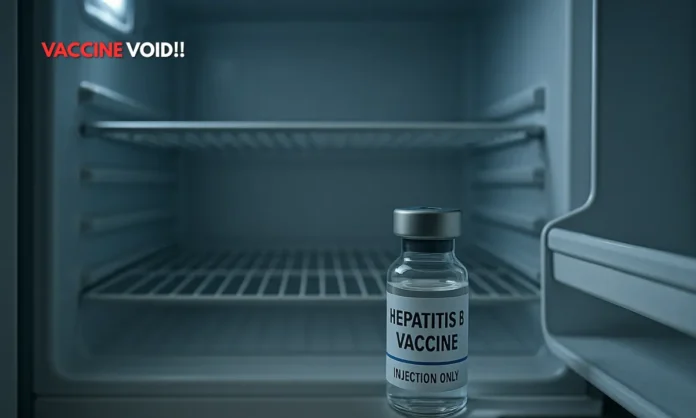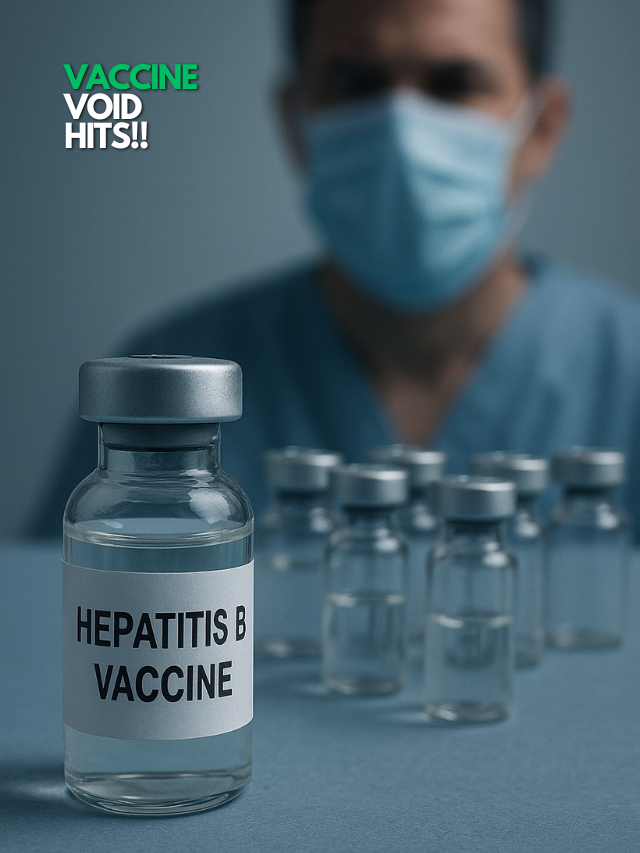Summary
- Bengaluru hospitals are grappling with a year-long shortage of the Hepatitis B vaccine, severely affecting high-risk patients including those with cancer, liver disease, and dialysis needs.
- Low manufacturing profitability has led to pharmaceutical companies deprioritizing the vaccine, with gaps in adult vaccination and incomplete immunisation schedules worsening the crisis.
- Government procurement efforts are insufficient, with public hospitals restricting vaccines to staff and rural regions facing even greater scarcity.
A Brewing Public Health Crisis: Bengaluru’s Vanishing Hepatitis B Shield
In the heart of India’s tech capital, a dangerous silence is unfolding—not in the ICUs, but in the vaccine fridges. Hospitals across Bengaluru have been battling a persistent Hepatitis B vaccine shortage for over a year, and doctors warn the implications could be life-threatening for thousands. The disease, a major global cause of liver failure and cancer, has quietly slipped off the pharmaceutical radar—not because it’s no longer a threat, but because it’s no longer profitable.
From gastroenterology wards to dialysis units, physicians are echoing the same concern: those most at risk are being left unprotected. While younger generations have benefitted from India’s Universal Immunisation Programme (UIP), adults—especially those in their 20s to 40s—are largely unvaccinated. The result is a dangerous immunity gap that has gone unaddressed, even as Hepatitis B silently spreads through needle pricks, medical procedures, and close household contact.
Over the past year, Hepatitis B vaccine shortages have hit Bengaluru's hospitals, with at-risk populations suffering the most. Doctors note vax manufacturers are disinterested in developing stocks for adults. @NammaBengaluroo @FAIMA_INDIA_ @phanakarnataka pic.twitter.com/Bmjl8FmX8w
— Udbhavi (@bhavibee) June 18, 2025
“No Money in Prevention”: Why Pharma Has Turned Away
- Vaccine manufacturers are reportedly withdrawing from production due to low profit margins, despite the high medical need.
- Hospitals now face supply constraints for both adult and paediatric doses, especially in Tier 2 cities.
- Many adults are forced to take double doses of paediatric vaccines, straining limited supplies further.
Dr Naresh Bhat, a leading hepatologist in north Bengaluru, says the problem boils down to one word: profit. “Pharmaceutical companies in the market are not interested in manufacturing this vaccine because profit margins are low,” he told Deccan Herald.
That market disinterest is now snowballing into a systemic healthcare gap. Dr Mallikarjun, a hepatologist in Koramangala, highlights a worrying workaround: many adults are being administered two paediatric doses (10 micrograms each) instead of the standard adult dose of 20 micrograms—because adult formulations are simply unavailable.
In smaller cities and rural districts, even paediatric doses have run dry, doctors say, leaving infants and immunocompromised patients vulnerable.
At-Risk Populations Left Behind: Dialysis Patients, Cancer Warriors, Frontline Staff
- High-risk groups—including cancer patients, end-stage liver disease patients, dialysis recipients, and healthcare workers—are unable to access complete vaccine schedules.
- Many patients miss the second or third dose of the three-shot regimen due to availability gaps.
- Government hospitals are reserving vaccines only for staff, with no supply for the general public.
The crisis isn’t just about unavailability—it’s about incompleteness. The Hepatitis B vaccine is administered in three doses over six months. But many patients can’t access even the second dose, rendering the first ineffective. “Prevention programmes are suffering. Families that need the vaccine do not get it,” said Dr Naveen Ganjoo, a senior hepatologist in JP Nagar.
And it’s not just patients. Healthcare workers, Group C and D staff, prison inmates, and police officers—all part of vulnerable or high-exposure groups—are at risk due to inconsistent vaccination drives.
The government’s response, so far, has been tepid. A Karnataka State Medical Supplies Corporation official said they are currently procuring 70,676 vials for state-run health facilities—but experts argue that’s far from enough for a city the size of Bengaluru, let alone the state.
Immunisation Gap and the Forgotten Adult Population
- While children under UIP are vaccinated, adults aged 20–45 remain largely unprotected unless vaccinated privately.
- Hospital records show 30% of patients with needle injuries lack vaccination history, making post-exposure protection harder.
- There’s a 25% risk of transmission to close family members if a person tests positive—heightening urgency for screening and prevention.
India’s immunisation story has a glaring gap: adults born before the universal roll-out of Hepatitis B vaccination in infants. These individuals, now in their 30s and 40s, form a large susceptible cohort. Worse, many are unaware of their vulnerability. A prick from a contaminated needle, a dental procedure without vaccination, or even living with an undiagnosed carrier can expose them to a lifetime of liver complications.
Dr Bhat explained that when someone is diagnosed with Hepatitis B, their family is also screened—because one in four close contacts could test positive. But without vaccine stock, screening offers little recourse. “We diagnose, we trace… and then we hit a wall. There’s no vaccine to offer,” he said grimly.
What Lies Ahead: Can Karnataka and India Fix This Before It Spreads?
The state government’s acknowledgement of the crisis is a start, but experts warn it’s not enough. With production sidelined by market economics, public-sector intervention may be the only way forward. Authorities must consider subsidy structures, domestic manufacturing incentives, and emergency stockpiles—especially for adult formulations and booster shots.
The vaccine shortage is also a warning signal: preventive healthcare, while cheap in theory, is only effective if supply chains, incentives, and access align. Bengaluru’s crisis is not just a failure of inventory—it’s a reflection of how public health is deprioritized when it doesn’t pay.
The cost of inaction? A quiet epidemic of cirrhosis, liver failure, and cancer in a generation that never saw it coming.



